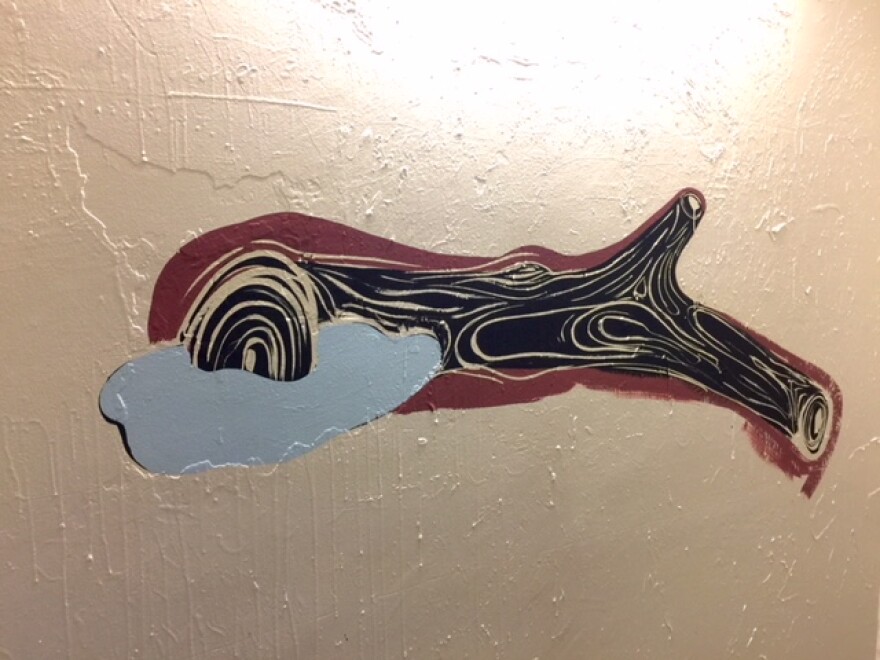There’s a formidable art piece going in at UH M?noa that could take you by surprise. It’s a three story painting in the stairwell on the Diamond Head side of the UH M?noa Art Building. The stairwell has long been a forum for self-expression, which is generally encouraged by the art faculty, but HPR’s Noe Tanigawa discovered recent vandalism crossed over into hate speech.

Though some may doubt it, for Art Department Chair Gaye Chan there’s a clear distinction between great graffiti and worthless graffiti.
Chan: I think there’s some really amazingly thoughtful and artistically interesting graffiti and vandalism as well, unfortunately none that occurred in that staircase where they were artistically uninteresting and content wise, totally thoughtless.
Not hate speech though...
Chan: In fact two months ago, there was neo-Nazi hate speech, including a swastika.
The vandalism spanned 3 floors of the stairwell and extended into the first floor women’s bathroom. That’s what led to incoming BFA candidate Mark Yoshizumi’s commission to paint the UH M?noa Art Department ceramics area stairwell --- nearly four floors.

Yoshizumi: I started up at the top near that door and worked my way down.
Yoshizumi says he’s been trying to get back to his headspace as a child, not so concerned about content.
Yoshizumi: The idea was to create these big shapes that kind of fell down the staircase as I went along. I wanted to get up at least out of my reach so I created that shape. I figured that since the architecture was so awkward and different, I could bring this shape and use it as something to keep the entire staircase cohesive. Like a big blue shape that kind of weaves throughout.
Yoshizumi: This project, tiring as it can be, it kind of helps me formulate ideas I can use in my own work. The whole point was to challenge myself artistically.
What kinds of imagery do you feel coming up?
Yoshizumi: Since before high school, my aunt was a gardener, so I would help her out. From there I would take on like landscape, farming jobs, basically anything outside. During any down time, or even as I was working, I would be sketching. A lot of that time was obviously outdoors, so a lot of the imagery, it might be hard to see, but they loosely reference local vegetation or anything like that.

Yoshizumi: I love graffiti but I didn’t have, I guess, a reason to make graffiti or a name I wanted to put behind it so I always just went back to those doodles of plants and used that to kind of look like lettering.
Last year Yoshizumi showed Kaimuk? landscapes with interwoven abstract shapes, and here, those shapes have busted free in the stairwell. The palette remains, kind of 1950’s , linoleum colors.
Your shapes become your vocabulary.
Yoshizumi: I’m trying to find shapes that kind of rest in a place in between. Where you kind of know what it is but you’re a little unsure.
Searching for your vocabulary of forms is looking for your style.
Yoshizumi: Yeah, I think today also it’s hard to do that because there are so many artists out there, especially with social media and stuff, you’re going to find artists you’re similar to and that might leak into your own style. To just sit with yourself and form your own way of painting is important I think. I’m just
trying to do what ever comes into my head I guess.
Yoshizumi will need to develop a body of work for his BFA in 2018.
Yoshizumi: For a while I’ve ben unsure of what to paint. This stair case has given me a platform to just relearn what I like to paint.
Will you be bummed when people start tagging over your stairwell?
Yoshizumi: I think I’m open to it. Maybe just let it sit for a little while, but then, I’d be interested to see what happens, how people interact with the space.





